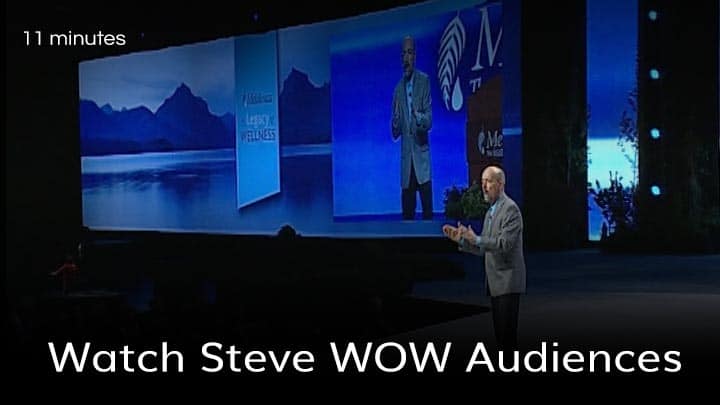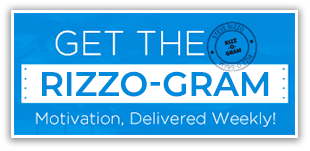Blog
Humor in Change Management
Humor in Embracing Change: The Strategic Leadership Tool Your Company Needs Now
Let’s talk humor in change management. Change is the only constant in business, yet most organizations still approach it with all the enthusiasm of a root canal. As someone who went from performing comedy alongside Jerry Seinfeld to helping Fortune 500 companies transform their cultures, I’ve learned something crucial: humor isn’t just nice to have during times of change—it’s a strategic necessity.
The companies that thrive during disruption aren’t the ones with the best plans (though planning matters). They’re the organizations whose leaders understand how to use humor strategically to help their teams not just survive change, but embrace it with energy and innovation. This isn’t about cracking jokes during layoffs or making light of serious challenges. This is about leveraging humor as a psychological and business tool to navigate uncertainty with resilience and purpose.
Humor in Change Management: The Psychology Behind Humor and Change Resilience
When faced with organizational change, the human brain naturally triggers stress responses that can paralyze decision-making and creativity. Fear of the unknown activates our amygdala, flooding our system with cortisol and adrenaline—chemicals that might help us escape a charging tiger but aren’t particularly useful for adapting to new software systems or restructured departments.
Here’s where humor becomes powerful: laughter literally rewires our stress response. When we laugh, our brains release endorphins, dopamine, and serotonin—neurotransmitters that counteract stress hormones and enhance cognitive flexibility. This isn’t feel-good science; it’s measurable brain chemistry that directly impacts business outcomes.
Research from Stanford University shows that people in positive emotional states demonstrate 31% higher productivity, 37% better sales performance, and three times more creativity in problem-solving. During times of change, when these capabilities are most critical, humor provides the neurological foundation for peak performance.

Why Traditional Change Management Falls Short
Most corporate change initiatives fail—studies consistently show failure rates between 60-70%. The traditional approach focuses heavily on processes, communications plans, and training programs. While these elements are important, they miss a fundamental truth about human psychology: people don’t resist change because they don’t understand it; they resist change because it feels threatening.
When leaders approach change with grim seriousness, PowerPoint presentations, and corporate speak, they inadvertently reinforce the message that change is something to be endured rather than embraced. The atmosphere becomes heavy with anxiety, and teams spend more energy worrying about what might go wrong than focusing on opportunities for growth and innovation.
Humor disrupts this cycle. When leaders can find appropriate moments of levity during change initiatives, they send a powerful message: “We’re confident enough in our ability to navigate this challenge that we can even laugh about it.” This confidence is contagious and creates psychological safety that enables teams to take risks, share concerns, and contribute creative solutions.
Humor in Change Management: The Business Case for Humor During Organizational Change
Accelerated Adoption Rates
Companies that incorporate humor into change management see dramatically faster adoption rates. Southwest Airlines, famous for its humorous culture, consistently implements operational changes more quickly than competitors. Their employees don’t just comply with new procedures—they actively look for ways to improve them because the culture encourages playfulness and experimentation.
When Virgin Group faced major restructuring, Richard Branson’s playful approach helped the organization adapt 40% faster than industry benchmarks. Instead of focusing on what employees were losing, Branson used humor to highlight new opportunities and possibilities. The result was an organization that viewed change as adventure rather than threat.
Enhanced Creative Problem-Solving
Change inevitably creates unexpected challenges that require innovative solutions. Teams operating in fear-based environments default to safe, conventional approaches. But when humor creates psychological safety, people feel free to suggest unconventional ideas and take creative risks.
Google’s famous “20% time” policy—which led to innovations like Gmail and AdSense—works partly because the company culture embraces playfulness and experimentation. When change initiatives incorporate similar elements of fun and exploration, teams discover solutions that rigid, serious approaches miss.
Improved Communication and Buy-In
One of the biggest obstacles during change is communication breakdown. People hear what they expect to hear, filter information through their fears, and often misinterpret messages. Humor can cut through this noise in remarkable ways.
When messages are delivered with appropriate humor, they become more memorable and less threatening. A well-timed, relevant joke can defuse tension, make complex information more digestible, and create shared experiences that build team cohesion. The key is using humor to enhance communication, not replace serious dialogue about real challenges and opportunities.
Strategic Applications of Humor During Change
Reframing Challenges as Adventures
The language leaders use during change dramatically impacts how teams respond. Instead of talking about “surviving” change or “getting through” difficult times, humor allows leaders to reframe challenges as adventures, opportunities, and even games.
When I work with organizations undergoing major transformations, I help leaders shift their language from fear-based to opportunity-focused. Instead of “We have to implement this new system,” it becomes “We get to discover new ways of working that will make us more effective.” This isn’t semantic manipulation—it’s a fundamental shift in mindset that humor makes possible.
Creating Shared Experiences
Change can be isolating. People worry they’re the only ones struggling or that everyone else is adapting better than they are. Humor creates shared experiences that remind teams they’re navigating change together.
Simple strategies like “Change Challenge of the Week” competitions, humorous metaphors for describing new processes, or playful recognition of “change champions” create connection points that combat isolation. These shared moments of levity become reference points that teams draw on during more difficult phases of transformation.
Celebrating Small Wins
Major organizational changes happen incrementally, but traditional change management often focuses only on final outcomes. Humor provides natural opportunities to celebrate small victories along the way, maintaining momentum and morale during long transformation processes.
Companies that regularly celebrate progress with appropriate humor see 23% higher completion rates for change initiatives. These celebrations don’t have to be elaborate—sometimes a funny email acknowledging a team’s creative solution to an implementation challenge is enough to energize continued effort.
Practical Implementation Strategies
The “Change Comedy” Approach
Develop a series of light-hearted analogies and metaphors that help explain complex changes. Instead of technical jargon about “digital transformation,” you might describe it as “teaching our company new dance moves.” This makes abstract concepts concrete and approachable while acknowledging that learning new steps sometimes means stepping on toes.
Humor-Based Feedback Loops
Create systems for teams to share their “change adventures” in humorous ways. This might include monthly storytelling sessions where employees share funny moments from implementing new processes, or digital platforms where people can submit memes about their transformation experiences. This serves dual purposes: it provides leadership with real feedback about implementation challenges while helping teams process difficulties through laughter.
The “Oops” Celebration
Instead of treating mistakes during change as failures, create systems that celebrate learning opportunities. Companies that institute “failure parties” or “oops awards” see 45% faster problem resolution because people report issues quickly rather than hiding them. The humor removes shame from the learning process and accelerates continuous improvement.
Humor in Change Management: Navigating the Fine Line: When Humor Helps and When It Hurts
Timing and Context Matter
Not every moment during organizational change is appropriate for humor. When people are genuinely worried about job security, when layoffs are happening, or when the organization is facing existential threats, humor can appear callous or out of touch. Effective leaders develop strong situational awareness about when humor helps and when it hinders.
The rule of thumb: humor works best when addressing process challenges, learning curves, and adaptation difficulties. It’s less appropriate when dealing with personal impacts like role eliminations or significant changes to compensation and benefits.
Reading Your Audience
Different teams and individuals respond differently to humor during change. Some people need more time to process emotions before they can engage with levity. Others use humor as their primary coping mechanism from day one. Effective leaders pay attention to these differences and adjust their approach accordingly.
In diverse, global organizations, cultural considerations become critical. Humor that works in Silicon Valley might not translate to teams in Tokyo or Frankfurt. Leaders must develop cultural competence around humor while finding universal elements that create connection across differences.
Authenticity Over Entertainment
The goal isn’t to become a stand-up comedian or turn the workplace into a comedy show. Authentic humor that emerges naturally from shared experiences and genuine care for the team is far more powerful than forced jokes or scripted entertainment. People can tell the difference between leaders who use humor to connect and those who use it to deflect or avoid difficult conversations.
Humor in Change Management: Measuring the Impact of Humor in Change Management
Quantitative Metrics
Organizations serious about leveraging humor during change should track specific metrics:
- Adoption speed: How quickly do teams implement new processes when humor is incorporated?
- Employee engagement scores during change periods compared to baseline
- Innovation metrics: Number of improvement suggestions and creative solutions generated
- Retention rates during transformation periods
- Customer satisfaction scores when changes affect client interactions
Qualitative Indicators
Beyond numbers, watch for:
- Language shifts in how people talk about change
- Voluntary participation in change-related activities
- Cross-functional collaboration during implementation
- Speed of problem identification and resolution
- Overall energy and enthusiasm during team meetings
Learning from Crisis: How Humor Helps Organizations Pivot
The COVID-19 pandemic provided a real-time case study in organizational change management. Companies that maintained appropriate humor during the crisis adapted more successfully than those that adopted purely serious, crisis-management approaches.
Organizations like Zoom, which experienced explosive growth, used humor to help teams cope with scaling challenges. Their internal communications included light-hearted acknowledgments of growing pains while maintaining focus on solutions and opportunities. This approach helped them maintain culture and performance during unprecedented change.
Similarly, restaurants that pivoted to delivery and takeout models often used humor in customer communications to acknowledge the awkwardness of the transition while building loyalty during difficult times. The ones that successfully maintained humor in their branding generally recovered faster than competitors who adopted purely serious crisis messaging.
The Neuroscience of Humor and Innovation
Recent neuroscience research reveals why humor is so effective during change: it literally rewires our brains for flexibility and creativity. When we experience appropriate humor, our neural networks become more interconnected, enabling us to see connections and possibilities that stress-based thinking blocks.
This has direct implications for organizational change. Teams that maintain humor during transformation periods generate more innovative solutions because their brains remain open to novel connections and unconventional approaches. The laughter doesn’t distract from serious work—it enables better thinking about serious challenges.
Building Your Humor-Enhanced Change Strategy
Start with Leadership Modeling
Change begins at the top, and so does the appropriate use of humor during transformation. Leaders must model the behavior they want to see, demonstrating how to maintain levity without minimizing real challenges. This requires developing emotional intelligence, timing, and genuine care for team members’ experiences.
Create Safe Spaces for Levity
Establish formal and informal opportunities for teams to process change through humor. This might include dedicated time in meetings for sharing change-related stories, informal gathering spaces where people can decompress, or digital platforms for sharing appropriate humor about transformation experiences.
Train Change Champions
Identify team members who naturally use humor effectively and train them as change champions. These individuals can help spread positive approaches throughout the organization while providing feedback about when and how humor is landing with different teams.
Humor in Change Management: The Future of Change Management
As business environments become increasingly volatile and unpredictable, organizations that master humor-enhanced change management will have significant competitive advantages. The companies that survive and thrive won’t necessarily be the ones with the best technology or largest budgets—they’ll be the ones whose people can adapt, innovate, and maintain resilience during continuous transformation.
This doesn’t mean every organization needs to become a comedy club. It means recognizing that humor, when used strategically and appropriately, provides powerful tools for navigating the human side of change. In an era where change is the only constant, the ability to laugh together while tackling serious challenges becomes a core competency for sustainable success.
Humor in Change Management: Conclusion: Embracing Change with Confidence and Joy
My journey from comedy clubs to corporate boardrooms taught me that the same principles that make people laugh can transform how organizations approach change. It’s not about making light of serious challenges—it’s about maintaining the human spirit and creative thinking that enable us to solve those challenges effectively.
The organizations that will thrive in our rapidly changing world are those that can maintain both focus and flexibility, seriousness and playfulness, determination and joy. Humor provides the bridge between these seemingly opposite qualities, enabling teams to tackle difficult transformations with energy, creativity, and genuine connection.
Your mindset truly is everything. When you can shift from viewing change as something that happens to you to something you actively embrace with confidence—and yes, even laughter—you transform not just your own experience but the experience of everyone around you. That’s not just good business; that’s the foundation of sustainable success in an uncertain world.
The question isn’t whether your organization will face change—it’s whether you’ll approach that change with the tools and mindset that enable not just survival, but growth, innovation, and genuine fulfillment along the way.
About Steve Rizzo: The Mindset Adjuster, Steve is a personal development expert, Funny Change Management Keynote Speaker, former comedian, and best-selling author. A Hall of Fame Speaker Inductee—among fewer than 200 worldwide since 1977—he’s dedicated to unlocking your happiest self.

